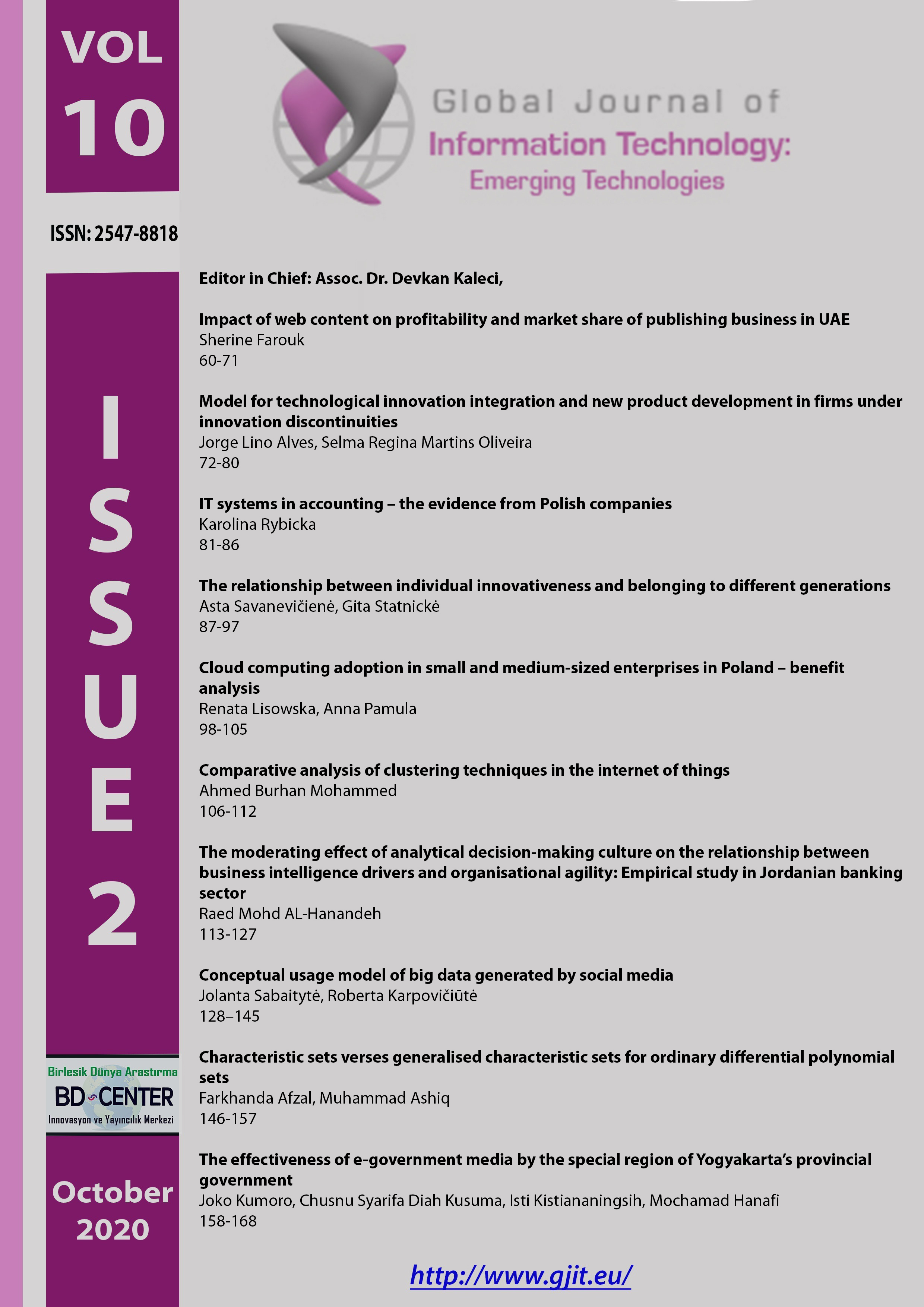Model for technological innovation integration and new product development in firms under innovation discontinuities
Main Article Content
Abstract
This article aims to contribute to a new planning policy in the development of innovative products. To do so, it presents a new modelling proposal to integrate technological innovation and new product development in a company of the traditional pewter sector in Portugal, under innovation discontinuities, carried out according to the following stages: Phase 1: Modelling of the information needs in product development process; Phase 2: Determining of technology integration dimensions to the product; and Phase 3: Evaluating the performance of technology integration dimensions to the product. A case study was conducted in a company of traditional tin sector in Portugal. The investigation was helped by the intervention of specialists. In order to reduce the subjectivity in the obtained results, the methods of Categorical Judgment Law, Artificial Neural Networks, the multi-criteria Electre III methods, compromised programming and Promethee II, multivariate analysis and the neuro fuzzy technology were used. The results were satisfactory, validating the present proposal.
Keywords: Modelling proposal, planning, integration, technological innovation, new product development, traditional pewter sector.
Downloads
Article Details

This work is licensed under a Creative Commons Attribution 4.0 International License.
Authors who publish with this journal agree to the following terms:- Authors retain copyright and grant the journal right of first publication with the work simultaneously licensed under a Creative Commons Attribution License that allows others to share the work with an acknowledgement of the work's authorship and initial publication in this journal.
- Authors are able to enter into separate, additional contractual arrangements for the non-exclusive distribution of the journal's published version of the work (e.g., post it to an institutional repository or publish it in a book), with an acknowledgement of its initial publication in this journal.
- Authors are permitted and encouraged to post their work online (e.g., in institutional repositories or on their website) prior to and during the submission process, as it can lead to productive exchanges, as well as earlier and greater citation of published work (See The Effect of Open Access).
